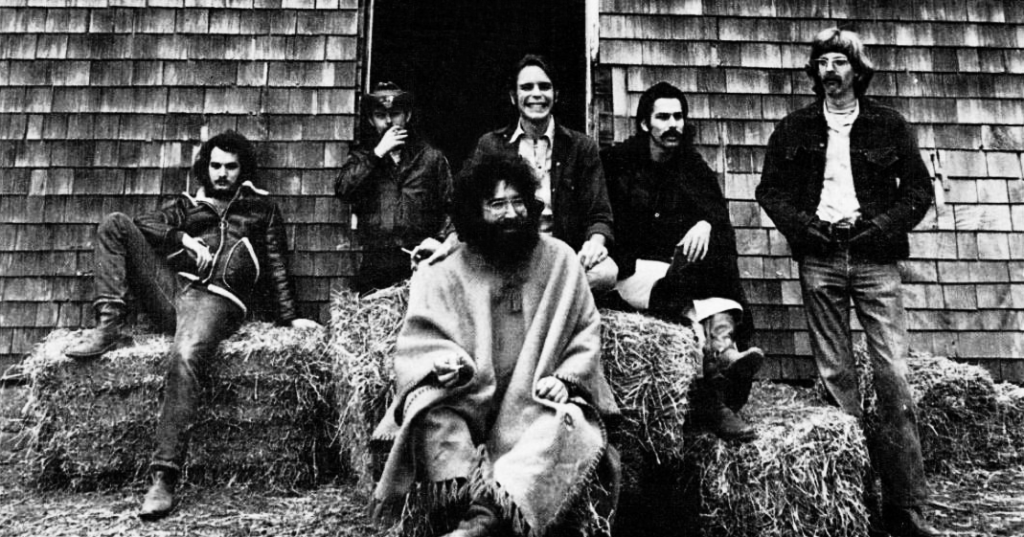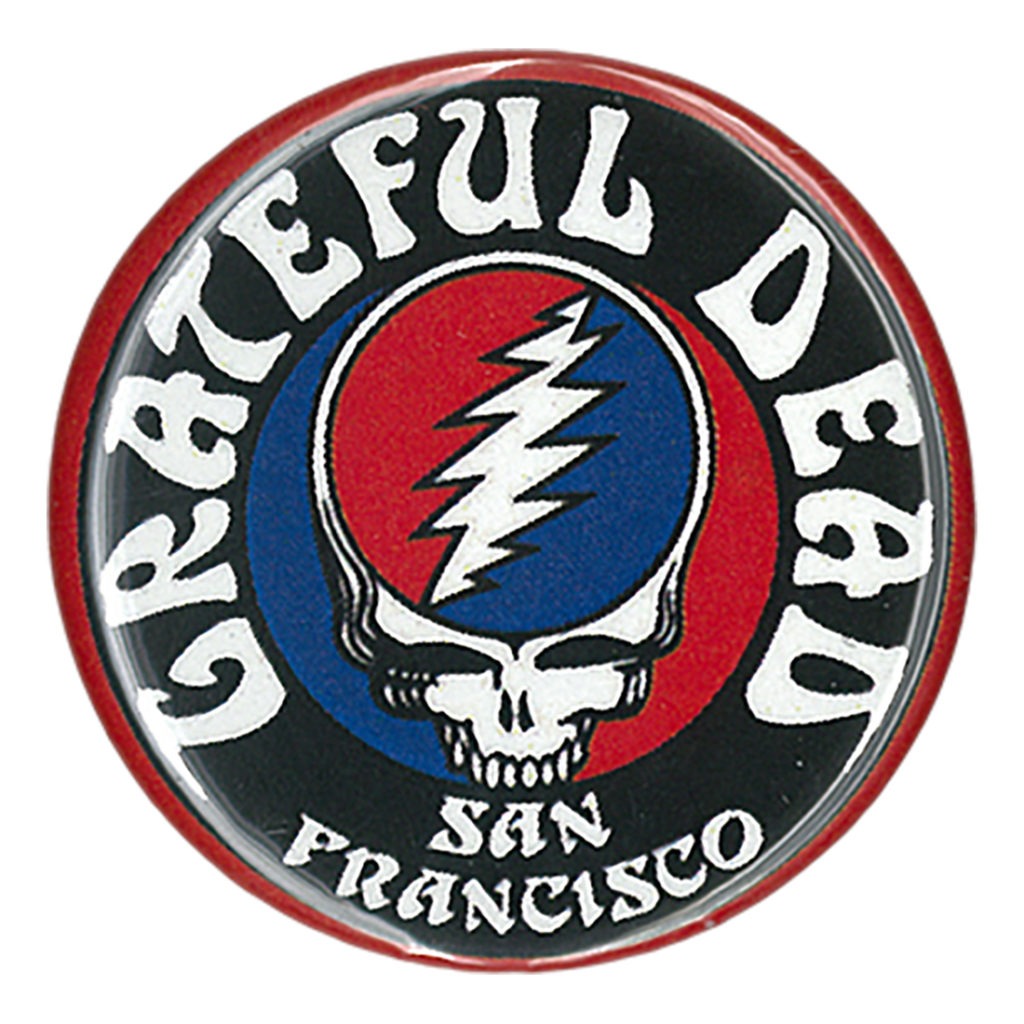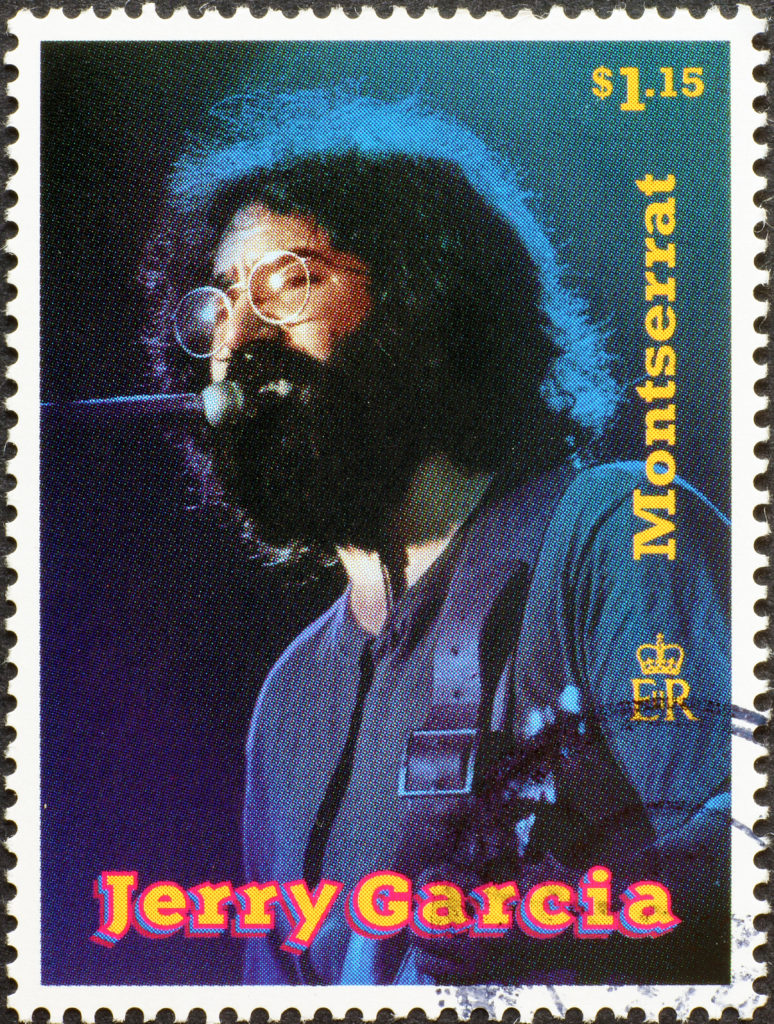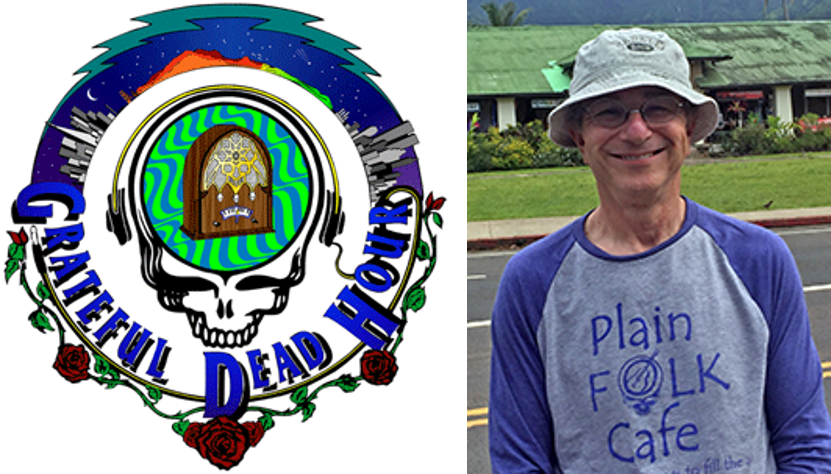
Truth be told, I was never much of a Grateful Dead fan. My tastes leaned more British Invasion – the Beatles, Stones, Zeppelin, Kinks, and the Who. And my idea of great bands from the U.S. leaned more to Steely Dan, the Eagles, and of course, Bob Seger.
But I’ve spent a lot of time with Dead fans over the years, and have developed an appreciation – or maybe a deep respect – for what they mean to people. The Dead always inspired a greater level of fandom. When I think about the cult that surrounds the band, I think about Steve Jones’ Brand Like A Rock Star book and industry presentations. Steve uses a variety of amazing bands – AC/DC, KISS, and others.
But Steve’s premise includes the Grateful Dead who had marketing sense before there were CMOs. As he notes in his book, “Never forget that when it comes to consumers’ purchasing decisions, the heart always trumps the mind.”
That sums up the core philosophy behind the Dead’s amazing appeal, but their longevity and staying power transcend their ability to build a robust cult following. And they didn’t do it with a string of #1 Billboard hits.
Last month, MediaPost’s Cory Treffiletti wrote a piece about the Dead that jumped off the page:
“Are The Grateful Dead The Greatest American Brand?”

Now, when we think of those classic brands that have stood the test of time, it’s hard not to mention Harley-Davidson, Apple, Disney – entities that are bigger than life whose products live up to the hype. I’ve never been interested in owning a motorcycle, but if I ever had a mid-life crisis, why wouldn’t I buy a Harley? I’m sure there are bikes that earn better reviews, but there’s no question I would have to have that “Hog” in my garage. It’s the real deal.
And the Grateful Dead have proved their mettle in much the same way, building their brand with consistency, connectivity, and a philosophy unique to other more prominent bands from the era – like the Who, Bruce Springsteen, and Queen that have found ways to maintain their relevance and their ability to tour despite setbacks and losses to key members.
After reading Cory’s tribute to the Dead, and thinking about some of the great radio brands – stations and personalities – I’ve been honored to work with, here are 8 ways the Dead have managed and maneuvered their way to all-star status:
1. They believed in sharing the music (before sharing was cool) – As Corey notes, the late Jerry Garcia and company predicted a future that would include music sharing; in their case, bootleg concerts that helped build their legendary status and their massive fan base. The Dead created their “cume” by giving their music away, a practice that would become more popular decades later.
2. They had an iconic look – They developed imagery that accompanied their music that spread through the help of their zealot fans. While it changed, morphed,  and evolved over the years, it always gave off the same vibe. For the Dead, it was always about merch.
and evolved over the years, it always gave off the same vibe. For the Dead, it was always about merch.
3. They tapped into fan emotions – As Steve Jones points out, the Dead appeal to your heart and your soul. The Dead have always been about more than the music they play, connecting with their fans, well beyond the T-shirts and the technology.
4. Their fans first philosophy – The Dead always knew the value of their brand went well beyond their recordings and their music. You may – like me – not be a hardcore fan of the band. But you have to respect their decades-long commitment to performance, breeding generations of Deadheads who follow them around from city to city, show to show. The Dead are the ultimate cult brand/band.
5. They have been true to their brand – As Cory points out, their promise matches the experience of seeing the band perform. They did not go through a “disco phase,” they don’t know what it is to lip-sync, and they never cluttered the stage with gimmickry and flash. They are the first of what has become a genre – jam bands.
6. They have achieved sustainability – Keep in mind, the original band played Woodstock, 50 years ago this summer. When you think about it, they may haven been the quintessential band to play that groundbreaking festival. Along the way, they lost front man Jerry Garcia a  quarter century ago while he was in his early fifties. And yet, as members have come and gone, the Dead soldier on. Perhaps ironically, John Mayer joined the band – now branded as Dead & Company, playing alongside alumni like Bob Weir. And it works. Unlike so many personality brands that fade out when their key members die or burn out, the new/old band are once again on tour for yet another summer, living up to their brand essence. The tour kicks off later this month in Mountain View, CA – appropriately.
quarter century ago while he was in his early fifties. And yet, as members have come and gone, the Dead soldier on. Perhaps ironically, John Mayer joined the band – now branded as Dead & Company, playing alongside alumni like Bob Weir. And it works. Unlike so many personality brands that fade out when their key members die or burn out, the new/old band are once again on tour for yet another summer, living up to their brand essence. The tour kicks off later this month in Mountain View, CA – appropriately.
7. They have built multi-generations of fans – Those of us who work in aging formats like Talk or Classic Rock understand the degree of difficulty of appealing to new fans with personalities and music that have been around for decades. But for the Dead, their appeal transcends their music and speaks to the counter-culture of their 60s and the ways in much modern fans connect to what they represent. Being a Deadhead meant something in 1968, just as it does today.
8.They are still on the radio – Rock radio programmers know “The Grateful Dead Hour,” hosted by  journalist/author/musician David Gans, has been around forever. In fact, Gans launched it back in 1985. With hundreds of affiliates, last weekend marked their 1,598th show. Yes, the Dead has even stood the test of radio time.
journalist/author/musician David Gans, has been around forever. In fact, Gans launched it back in 1985. With hundreds of affiliates, last weekend marked their 1,598th show. Yes, the Dead has even stood the test of radio time.
You may not be a Deadhead, you may not love their music, or even what the band has stood for. But you cannot deny the resilience and staying power of what the Grateful Dead have created and built.
For those of us who respect great brands and the paths that got them there, Cory may indeed be right: The Dead may be America’s greatest brand.
- What To Do If Your Radio Station Goes Through A Midlife Crisis - April 25, 2025
- A 2020 Lesson?It Could All Be Gone In A Flash - April 24, 2025
- How AI Can Give Radio Personalities More…PERSONALITY - April 23, 2025




The irony of of the Dead’s trajectory is that they never set out to market themselves in any of these ways. They simply wanted to enjoy life, play their music and have fun. Maybe the quintessential American experience. They were true to their ideals and didn’t “chase” the dollar. Others picked up on it and their mantra grew but stayed true. Maybe their real success lay in the fact that they weren’t trying to be successful they simply wanted to play their music. The by product of that is what we see today in a true and real marketing message.
I think that’s right, Jon. Oftentimes, success is all about doing the right things and over time, people notice it. They made many smart bets at the beginning, many of which paid off handsomely. But as you suggest, it was probably born out of not necessarily aiming to be superstars.
Like just about everything they did, they pretty much had the good fortune to stumble upon it. Jerry probably would have a good chuckle over your theory or attempt to align the original band’s trajectory to material and marketing practices. Until his death, the GD organization was about two things. The live music experience and keeping a connection to the fans. The former was by being leading edge with PA technology and the ultimate geeks in sound quality. The latter was through the original newsletter and doing their own tickets. For the GD it was always about the music. “Merch” as you call it was something the band did NOT even try to steer let alone control until the early 90s. Before that it was true street art made by fans and folks that hung around the scene outside the venue, not t-shirts made in China. They did not build a brand with the brand in mind – at least not the organization that had the actual name “Grateful Dead” (which currently does not exist)
I was attracted to the music. I never heard anything like it *because* they were the only group that cared about what it sounded like to that one guy standing way in the back and top of the arena or stadium. That band could play together in a way that Dead & Company doesn’t come close to. They can’t. They don’t have enough experience together to have that level of conversation with each other.
I don’t care much for the Dead & Company. I’ve been to a few shows but it just doesnt do “IT” for me. Much of the time its pretty contrived. I think of them as an average Dead cover bands. There are other GD cover bands that do it better.
So yeah there’s a marketing component that exists now but Dead & Co *just* started. All the period between 1995 and them starting was pretty sparse with fits and starts of different formations.
I’m among the group of many many fans who never saw the brand aspect that exists today because it simply didn’t then. The GD didn’t allow taping because they had forsight. They just didn’t care. Jerry said “when im done with, they can have it”
There is definitely broad appeal now but its to a whole different generation of people who most of whom are not old enough to have ever been to a real Grateful Dead concert. This brings me back to the point about it being about live music. Bill Graham said it well “they are not the best at what they do, they are the only ones who do what they do”. the unpredictability of what would happen was the appeal.
ps Phil Lesh is not and never has been a member of Dead & Company.
Kevin, thanks for the thoughtful response, putting the Dead story in more perspective from someone who’s obviously a true fan. I think that some of today’s great brands (and I count the Dead among them) “stumbled” into their success, as you put it, by doing the right things and serving their fans. The money, fame, and iconic status comes later. As for the Lesh reference, as you saw, I got the photo caption correct, but meant to say Bob Weir in the copy – and didn’t. It’s been corrected. Thanks for your recollections and POV.
I enjoyed your take/perspective on the band, Deadheads and the brand, but kindly remember we’re more than marketing.
We have a true sense of brotherhood, stewardship and the band’s commitment(s) to philanthropic endeavors worldwide. Did all this come strictly from the music and concerts? No, but like minded folks congregate, right?
Yes, we’re quite the brand, alright. I do my own part to spread the imagery you mentioned at will, and near daily.
You did indeed nail it saying that the music doesn’t just grab your heart, but your soul itself. That’s how we do it, that’s how it’s been done, and wHaTeVer label is put upon it over time is irrelevant, as long as it lives on. After 54 years they’re still at it and so are we.
Thanks for the positive piece.
#WeirEverywhere
#NotFadeAway
Appreciate the comments and the sentiment, Vindo.
Fred:
While it’s always nice to see praise for one of my favorite bands, you’ve got a lot wrong in your piece.
Jon, the previous commenter, nailed it by pointing out that the Dead didn’t “set out” to do anything other than play music they loved. There was no calculated branding or positioning going on. No focus groups or auditorium tests (other than the acid tests – ha!). It was an organic thing. Pretty much the exact opposite of what you have spent your career promoting.
You also blew it in several factual details that detract from your credibility on the subject. The Dead were not “all about the merch.” Most GD shirts one ever saw were created by fans, as was one of their most famous images, the dancing bear. The creative vibe of the parking lot scene was a another prescient part of the oeuvre, but it did not come from the band.
Phil Lesh is not pet of Dead & Co., and this does not play with John Mayer. And the Dead certainly did have a disco phase in the late 70s when they released Shakedown Street and the reboot (rebooty-ed?) Dancin in the Streets.
You did well to include David Gans in the piece. If only you had shown him a draft, he could have corrected these glaring errors.
Tom, I appreciate that. I admitted at the beginning of the post that I was not/am not a Dead fan – and that obviously showed up in the piece. Thanks for setting me straight.
There is also a Third Eye component in much of their music. A seeking of something larger than themselves that points beyond a surface reading. That also connects with certain personality types that appear in every generation. Hence the multi-generational appeal that I suspect will exist beyond the days of some of us who were around for most of it are long gone.
There is also the depth and strength of the songbook, which is even recognized by many in the mainstream. Add to that their uniquely powerful improvisational language, and you have an entity that has earned the historical position that even the many who were not interested at all are beginning to accept.
I love the Third Eye reference, John. That explains the phenomenon in an intuitive way. Thanks so much for the comment.
This is a fun story. I enjoyed this both as a longtime Deadhead since 1989 when I saw my first show, and as a TV/radio tech PR rep in the broadcast industry. Thank you.
I think you share a personal sentiment with so many other people I have spoken too in recent years – they never liked the music (and would often be puzzling strong in their disdain), but have developed an admiration as time has passed. Fans of indie rock and punk who once despised the music now even embrace it to a degree. (See 2016’s “Day of the Dead” compilation – five discs of Dead covers by mostly modern indie bands). Their songs and their brand, as you say, stand the test of time.
As another poster said, they never set out to market themselves in this way – yet they had the sense to embrace and nurture opportunities in ways that grew the fanbase and their brand without ever selling out. They did it (mostly) their own way. To me, they were the first punk band in that respect.
When someone argues that the Dead are just a jamband, I say hell no. The Grateful Dead are not a jamband – they are a goddamn American treasure.
See you on tour this summer, Fred?
You never know, Brian. I’ve never seen the Dead, so maybe this is the summer. Thanks for the great, thoughtful comment.
Eye candy headline to any Head, Fred ! Obviously lots of history, books about the GD Marketing model. Or really, a lack thereof until the Touch of Grey (1986) throngs sent them into the larger stadiums & all that came with. Mainly throngs of ‘the wookies’ of a traveling carnival that outnumbered paying fans inside at some venues.
Fun to read, ^^the largest correction is^^ The Grateful Dead did NOT allow recordings ‘officially’ until Jerry would not impose ‘rules’ on the fans as that went against almost ‘everything’ they stood for. The belief was, once their music was played, it ‘is gone’ and had no more purpose for the band. So if their fans wanted to listen to recordings of shows exactly as the band did for decades, they should be able… a best marketing strategy as we look back….
Anyhow, end of day the taper ticketing solution was created. It only grew the ‘legendary’ stories, many characters real or imagined, who did end up creating new marketing rules for others without realizing this, at the time. The GD channel is one of the largest reasons ppl pay for Sirius. The GD Hour is still great listening and available in so many ways – another lesson radio might try to apply to other such cultural phenomena
I love hearing these personal stories and interpretations from Deadheads. Thanks so much, Josh, for making these comments interesting and insightful.